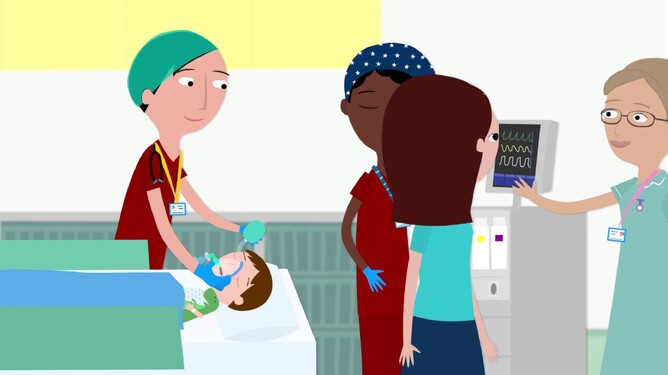There are many different types of medicines to help reduce your child's pain and anxiety during tests and procedures for cancer.
Key points to remember
- numbing medicine numbs the skin and tissues underneath the skin
- numbing medicine may burn a little bit at first
- sedation involves using medicine, or a combination of medicines, to help your child relax or sleep through the test or procedure
Numbing of the skin and tissues (local anaesthesia)
Your child may have a numbing medicine before a test or procedure. This medicine may be a cream, spray, patch, or another device placed on the skin.
The medicine numbs the skin and tissues underneath the skin. For many children, this is enough numbing medicine for a needle procedure.
After the medicine has numbed the surface of the skin, sometimes your child will have another numbing medicine. A doctor will inject this medicine a little bit deeper into the tissue using a small needle. This numbing medicine may burn a little bit at first, but after 1 to 2 minutes, the tissue will feel numb all the way down to the bone.
Sedation
If your child needs more than local anaesthesia (numbing the skin and tissues), your health care team will talk with you about sedation.
Sedation involves using medicine, or a combination of medicines, to help your child relax or sleep through the test or procedure.
There are different levels of sedation, ranging from a feeling of calm, to sleepiness, to being completely asleep (general anaesthesia). The level of sedation will depend on your child's condition, procedure anxiety, and hospital guidelines.
The goal of all levels of sedation is to keep your child comfortable and free from pain. Talk with your healthcare team to learn more about what type of sedation is best for your child.
Click Donate to fund the ongoing development of the Circulating Tumor DNA project which will improve outcomes for those children already diagnosed with cancer.
Disclaimer - Content on this blog is for educational use only. Please consult your doctor or other health professional to make sure the information is right for your child.
Copyright - Please note that the information on this blog is copyright owned by The Paediatric Society of New Zealand and Starship Foundation. See copyright information at the Kids Health website.
